Mazda CX-30 vs Suzuki Ignis – Differences & prices compared
Compare performance, boot space, consumption and price in one view.
Find out now: which car is the better choice for you – Mazda CX-30 or Suzuki Ignis?
The Mazda CX-30 (SUV) comes with a Petrol MHEV engine and Manuel or Automatic transmission. In comparison, the Suzuki Ignis (SUV) features a Petrol MHEV engine with Manuel or Automatic transmission.
When it comes to boot capacity, the Mazda CX-30 offers 430 L, while the Suzuki Ignis provides 267 L – depending on how much space you need. If you’re looking for more power, decide whether the 186 HP of the Mazda CX-30 or the 83 HP of the Suzuki Ignis suits your needs better.
In terms of consumption, the values are 5.70 L per 100 km for the Mazda CX-30, and 4.90 L for the Suzuki Ignis.
Price-wise, the Mazda CX-30 starts at 25200 £, while the Suzuki Ignis is available from 15600 £. Compare all the details and find out which model fits your lifestyle best!
Mazda CX-30
The Mazda CX-30 effortlessly combines sleek design with a sense of adventure, making it an appealing choice for urban explorers and countryside enthusiasts alike. Inside, the cabin is thoughtfully designed, offering both comfort and cutting-edge technology to enhance the driving experience. Its performance on the road is agile, providing a smooth and engaging journey for drivers and passengers.
details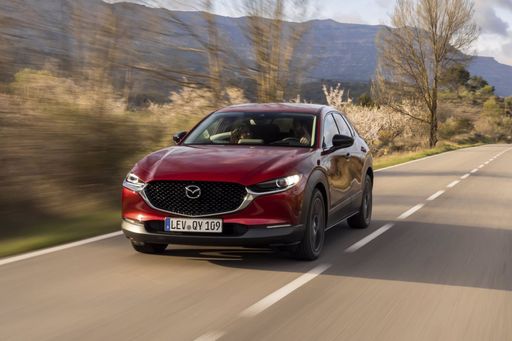 @ de.mazda-press.com
@ de.mazda-press.com
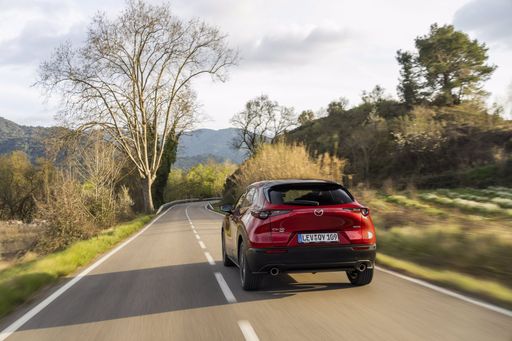 @ de.mazda-press.com
@ de.mazda-press.com
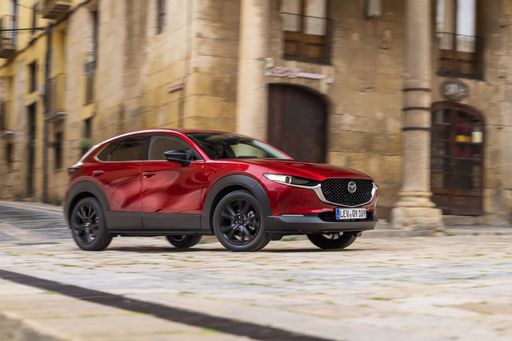 @ de.mazda-press.com
@ de.mazda-press.com
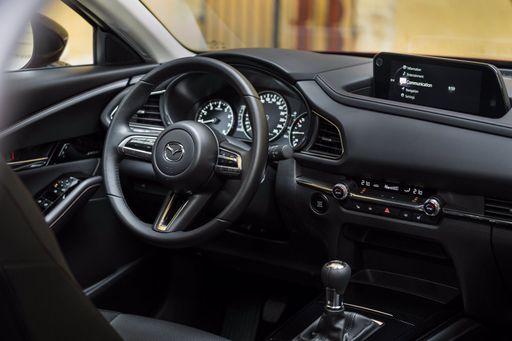 @ de.mazda-press.com
@ de.mazda-press.com
Suzuki Ignis
The Suzuki Ignis is a compact car that stands out with its unique blend of small SUV aesthetics and city-friendly dimensions. Its playful and distinctive design, combined with a practical and elevated driving position, makes it an appealing choice for urban dwellers seeking versatility without compromising on style. Inside, the Ignis offers a surprisingly spacious cabin with innovative storage solutions, making it ideal for those who need a functional yet characterful vehicle.
details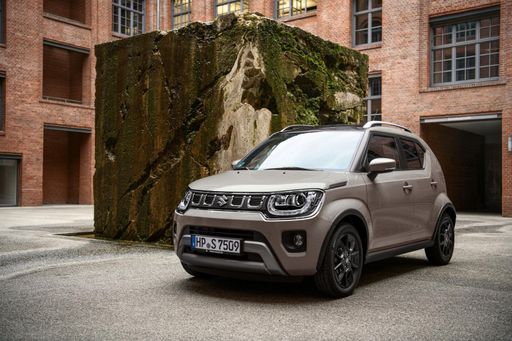 @ Suzuki
@ Suzuki
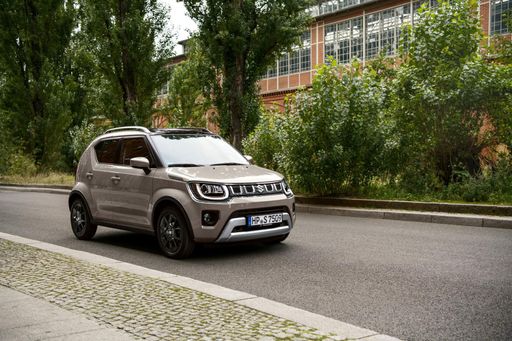 @ Suzuki
@ Suzuki
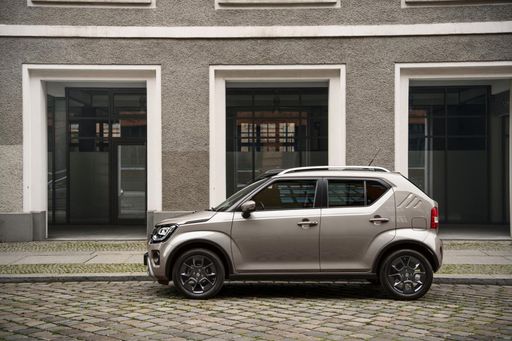 @ Suzuki
@ Suzuki
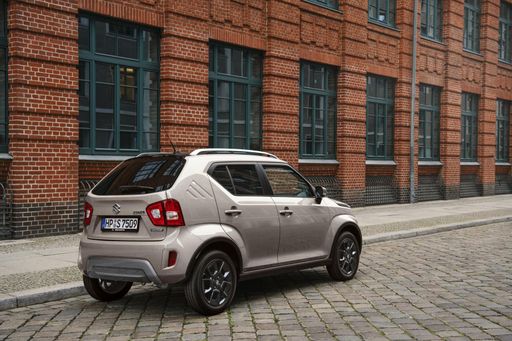 @ Suzuki
@ Suzuki
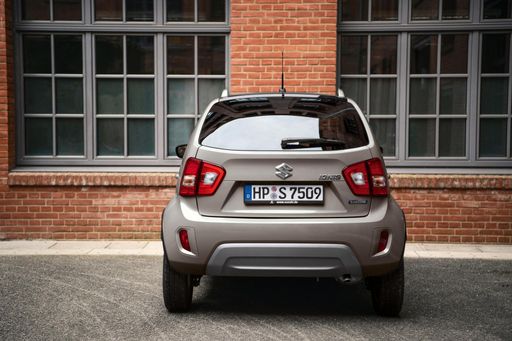 @ Suzuki
@ Suzuki

|

|
|
|
|
Costs and Consumption |
|
|---|---|
|
Price
25200 - 36800 £
|
Price
15600 - 19500 £
|
|
Consumption L/100km
5.7 - 6.6 L
|
Consumption L/100km
4.9 - 5.4 L
|
|
Consumption kWh/100km
-
|
Consumption kWh/100km
-
|
|
Electric Range
-
|
Electric Range
-
|
|
Battery Capacity
-
|
Battery Capacity
-
|
|
co2
129 - 148 g/km
|
co2
110 - 122 g/km
|
|
Fuel tank capacity
48 - 51 L
|
Fuel tank capacity
30 - 32 L
|
Dimensions and Body |
|
|---|---|
|
Body Type
SUV
|
Body Type
SUV
|
|
Seats
5
|
Seats
4 - 5
|
|
Doors
5
|
Doors
5
|
|
Curb weight
1455 - 1587 kg
|
Curb weight
935 - 995 kg
|
|
Trunk capacity
422 - 430 L
|
Trunk capacity
204 - 267 L
|
|
Length
4395 mm
|
Length
3700 mm
|
|
Width
1795 mm
|
Width
1690 mm
|
|
Height
1540 mm
|
Height
1605 mm
|
|
Payload
458 - 496 kg
|
Payload
335 - 395 kg
|
Engine and Performance |
|
|---|---|
|
Engine Type
Petrol MHEV
|
Engine Type
Petrol MHEV
|
|
Transmission
Manuel, Automatic
|
Transmission
Manuel, Automatic
|
|
Transmission Detail
Manual Gearbox, Automatic Gearbox
|
Transmission Detail
Manual Gearbox, CVT
|
|
Drive Type
Front-Wheel Drive, All-Wheel Drive
|
Drive Type
Front-Wheel Drive, All-Wheel Drive
|
|
Power HP
140 - 186 HP
|
Power HP
83 HP
|
|
Acceleration 0-100km/h
8.3 - 10.3 s
|
Acceleration 0-100km/h
12.7 - 12.8 s
|
|
Max Speed
191 - 204 km/h
|
Max Speed
155 - 165 km/h
|
|
Torque
238 - 240 Nm
|
Torque
107 Nm
|
|
Number of Cylinders
4
|
Number of Cylinders
4
|
|
Power kW
103 - 137 kW
|
Power kW
61 kW
|
|
Engine capacity
1998 - 2488 cm3
|
Engine capacity
1197 cm3
|
General |
|
|---|---|
|
Model Year
2025
|
Model Year
2020
|
|
CO2 Efficiency Class
D, E
|
CO2 Efficiency Class
C, D
|
|
Brand
Mazda
|
Brand
Suzuki
|
Mazda CX-30
The Mazda CX-30: Where Innovation Meets Efficiency
The Mazda CX-30 stands as a testament to Mazda's commitment to blending the best of technology and design. Positioned as a subcompact SUV, the CX-30 delivers the practicality of an SUV with the agile driving dynamics of a smaller vehicle. As we delve into its technical and innovative aspects, the CX-30 showcases why it's a formidable choice in today's competitive automotive market.
Engine and Performance: Power Meets Efficiency
The heart of the Mazda CX-30 lies in its sophisticated engine offerings. At its core, the e-SKYACTIV-X engines provide a unique balance of performance and fuel efficiency. With 186 PS at your disposal, these engines optimise the combustion process, reducing both fuel consumption and emissions. The engine's mild-hybrid system further enhances its efficiency by capturing energy during braking, making it one of the more environmentally conscious choices on the market.
Transmission and Drivetrain Options
Buyers have the flexibility to choose between a manual or an automatic transmission, catering to diverse driving preferences. The available all-wheel drive (AWD) system provides enhanced stability and control, particularly useful in variable weather conditions or challenging terrains. Those preferring a classic driving experience can opt for the front-wheel drive (FWD) variants, which still deliver impressive traction and handling.
Design and Dimensions
The Mazda CX-30's dimensions—4395 mm in length and 1795 mm in width—offer a spacious and comfortable interior while maintaining a sleek and modern exterior design. Its aerodynamic form not only enhances its aesthetic appeal but also contributes to improved performance and fuel efficiency. The interior, adorned with high-quality materials, reflects Mazda’s dedication to creating a premium driving experience.
Interior Comfort and Technology
Inside, the CX-30 does not disappoint. With a cabin that seats five comfortably, it strikes an excellent balance between style and practicality. The infotainment system, replete with intuitive controls and connectivity options, ensures that drivers remain connected and entertained on the go. Additionally, advanced safety features bolster the confidence of any journey, safeguarding occupants and pedestrians alike.
Pricing and Model Variants
The Mazda CX-30 is offered in a variety of model configurations, each catering to different budgetary and feature preferences. The entry-level models provide excellent value, while higher trims, such as the Exclusive-Line and Takumi, offer luxurious enhancements and additional technology features. With pricing from €28,940 to €42,390, the CX-30 positions itself as an attractive option in its segment.
Conclusion: The Ideal Mix of Performance and Practicality
In summary, the Mazda CX-30 emerges as a versatile and appealing option for those seeking a compact SUV that does not compromise on performance or sophisticated engineering. Its combination of innovative technology, efficient powertrains, and driver-centric features make it a worthy contender in its class. Whether navigating urban landscapes or exploring rural roads, the CX-30 delivers an engaging and reassuring drive.
Suzuki Ignis
Introducing the Suzuki Ignis: A Compact SUV Marvel
The Suzuki Ignis, with its distinctive compact SUV design, seamlessly combines style, practicality, and a hint of adventure. This versatile vehicle is the epitome of efficient urban motoring, boasting impressive attributes while maintaining a pocket-friendly appeal. Let's delve into what makes the Ignis a remarkable choice for urban drivers and adventure enthusiasts alike.
Innovative Mild-Hybrid Technology
At the heart of the Suzuki Ignis is its innovative Mild-Hybrid technology, which pairs a 1.2-litre Dualjet petrol engine with an integrated electric motor. This combination promotes a seamless driving experience with reduced emissions and better fuel efficiency. The engine delivers a respectable 83 PS (61 kW), with a smooth power output that's perfect for navigating busy city streets or winding country roads, ensuring you get the best of both worlds in performance and eco-friendliness.
Versatile Drivetrain Options
Drivers can choose between manual and automatic transmission options to suit their driving preferences. For those seeking added stability and control, the Ignis also offers an ALLGRIP all-wheel-drive system that promises enhanced traction under challenging conditions. Whether you favour a traditional manual gearbox or prefer the ease of an automatic, the Ignis provides flexibility to match your lifestyle.
A Perfect Blend of Performance and Efficiency
With an impressive consumption range of 4.9 to 5.4 L/100km, the Ignis manages to balance performance and efficiency effectively, leading to reduced running costs and a lesser environmental impact. This makes it an ideal companion for both urban and rural commutes, delivering an engaging driving experience with low fuel consumption.
Compact Yet Spacious Design
Despite its compact dimensions (3700 mm in length, 1690 mm in width, and 1605 mm in height), the Suzuki Ignis does not compromise on space. It boasts a practical five-door layout, accommodating up to five passengers comfortably. The boot offers a capacity ranging from 204 to 267 litres, ensuring that you have ample space for luggage or shopping, whether you're heading for a weekend getaway or a day in the city.
Attention to Safety and Comfort
The Suzuki Ignis places a strong emphasis on safety, equipped with several driver assistance features and an efficient braking system, ensuring peace of mind on every journey. Inside, the cabin is designed for comfort, with high-quality materials and user-friendly technology, creating an inviting atmosphere for both driver and passengers.
Economical Ownership
Owning a Suzuki Ignis is not only attractive from a driving perspective but also in terms of running costs. With monthly expense estimates between €673 and €751 and competitive cost per kilometre, the Ignis stands out as a cost-effective option for the budget-conscious driver. It also holds a favourable position in CO2-efficiency classes, further reinforcing its status as an economical choice.
Final Thoughts
The Suzuki Ignis is more than just a car; it's a modern-day companion designed for those who value efficiency, practicality, and style without sacrificing performance. Whether navigating through urban landscapes or tackling country roads, the Ignis offers reliable functionality complemented by advanced features. It is a testament to Suzuki's ongoing innovation and commitment to meeting the demands of today's drivers.
The prices and data displayed are estimates based on German list prices and may vary by country. This information is not legally binding.
